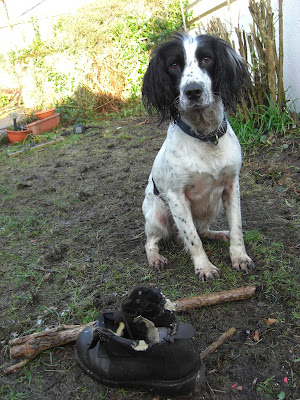Horticultural Therapy
Horticultural therapy or Social and Therapeutic Horticulture as it is also known has been an extremely successful method of keeping both mind and spirit healthy and positive. There are loads of different areas of the Health Service where it can be used and specific exercises and projects can be created to suit the individual.Where can Horticultural Therapy practiced?
• Psychiatric hospitals and mental health programs • Vocational, occupational and rehabilitation programs
• Substance abuse programs
• Hospitals and clinics
• Hospice and palliative care programs
• Correctional facilities
• Public and private schools
• Community and botanic gardens
• Assisted living and senior centres
• Residential setting such as foster care, homeless shelters
• Physical rehabilitation hospitals
There are a couple of places where Horticultural Therapy are practiced very successfully in Inishowen, the Whites Oaks Centre in Muff and Cashel na Cor on the outskirts of Buncrana. A growing number of schools across the peninsula are also finding that creating their own gardens for the pupils to work in has beneficial effects on children’s behaviour as they get fresh air exercise and the satisfaction of seeing something grow that they can eat or cut and put into a vase.
All of the jobs such as digging, weeding, mowing and lawn maintenance, pruning, trimming hedges, sweeping and raking, watering, sowing seeds, planting out, growing in containers and moving things in the garden can be tailored to the individual depending on their requirements.
Different Approach
Someone who gardens after recovering from a stroke or has heart disease will need to approach things differently to someone in a wheelchair, with sight loss, a weak grip, only the use of one hand or not being able to bend. Suffering depression can be debilitating and sometimes the client will feel totally exhausted by just being in the garden and will benefit from just being out of doors. Senior citizens in nursing homes might be stuck in doors all day too so the option to work gently outside for an hour could make their day, especially if they were used to being active in the garden before being moved from their home.Limber Up
Regardless of our condition it’s always important to limber up with some stretching exercises before going to work in the garden
I know myself that when I am physically fit the garden is a joy to work in, on the other hand when I have a bad back the garden can be quite stressful and appear to grow in size. An even simple job such as picking the trowel up from the ground is a major issue.
Getting ready to garden when you can't bend easily
• Taking a bit of time to get ready can really make a difference. Some of the stresses and strains of gardening happen when we begin a job on impulse, without any planning.
• When you have difficulty bending, working in short bursts and changing position frequently will cause less strain.
• Try and avoid over reaching by making sure that you are working at a comfortable height.
• Make your raised beds narrow, so that you can reach without straining.
• Get all the tools you’ll need together to save trips back and forth to the shed or garage. Try and keep your storage area tidy and you’ll be able to find your tools more easily.
Taking care in the garden
• Have breaks with a warm or cold drink according to the weather. Stop work before you get too tired.• Hand rails and resting places can ease the strain of moving around the garden. Also, make sure that your paths are even and have a non-slip surface.
• If you find it difficult to carry things, you might need to base your activities near the house or the place you keep your gardening equipment.
Tools for the job
• Make sure you choose the right tools for the job. Try out tools before you buy them and check for weight and comfort. Choose well balanced and lightweight tools to help prevent stresses and strains.• Picking small things up from ground level can be easier using a litter picker. A grabber rake is useful for lifting larger amounts of debris. A long handled dustpan and brush is another option.
• Find the best way for you to carry your tools. You could use a garden trolley with a sturdy frame, which could double up as support if your balance is a problem, a twin wheeled barrow, tool carrier, bucket, or a tray or basket attachment if you use a wheelchair.






















